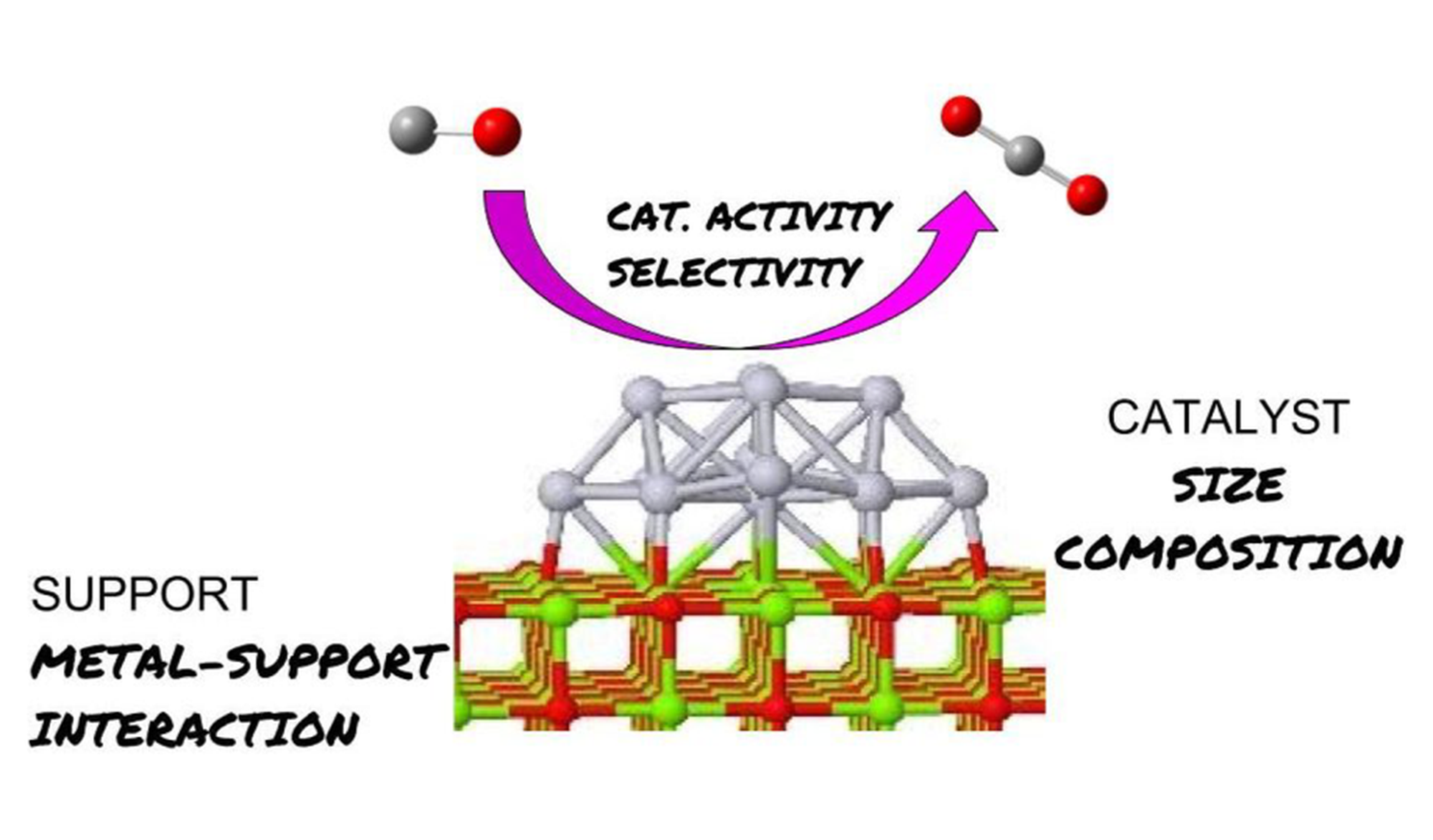Doping of Pt-based nanocatalysts for their use in CO oxidation

Internship
Type of Project: Experimental
Location: Donostia
Supervisor:
Jon M. Matxain
Elisa Jimenez
elisa.jimenez@ehu.eus
Today over 90% of all chemical manufacturing processes make use of heterogeneous catalysis having an enormous impact on the world economy. These critical materials enable selective formation of desired products at rates that are commercially viable. Catalysis is not only important for the production of chemicals, materials and food but is also essential for pollution control and medical applications, and it is at the heart of the development of sustainable energy solutions. Therefore, research on catalysis is a continuing developing area which involves different sciences such as chemistry, surface science and materials science.
The aim of this research project is to design catalysts with optimized properties (catalytic activity, selectivity and durability) through the understanding and manipulating the electronic structure of such catalysts. Two main lines of research will be developed. The first one will be focus on trying to mitigate the deactivation of the metallic nanoclusters supported on surfaces. The second line of research will be the understanding and optimization of the catalytic properties of such catalysts. These goals will be carried out from a computational approach that combines global optimization techniques, realistic modelling and chemical bonding analysis. The model catalysts in this study will be nanoclusters of Ag, Pt, and Pd to catalyze CO oxidation reaction and de-hydrogenation of ethane. Although the two principal lines of this project are independent, there will be a continuous feedback between them, so the knowledge gained in one will be used in the other.
The proposed systems will be modeled using plane waves, DFT methods, and periodic boundary conditions with modern functionals and the inclusion of dispersion. In order to identify the lowest-lying isomers that will be populated at the considered temperatures. We will use the recently developed DNNF Global Optimization method. Importantly, the chemical bonding will be analyzed by state of the art methods such as Solid State Adaptive Natural Density Partitioning method, which achieves a seamless description of systems featuring both localized and delocalized bonding and the energy decomposition analysis for extended systems.
